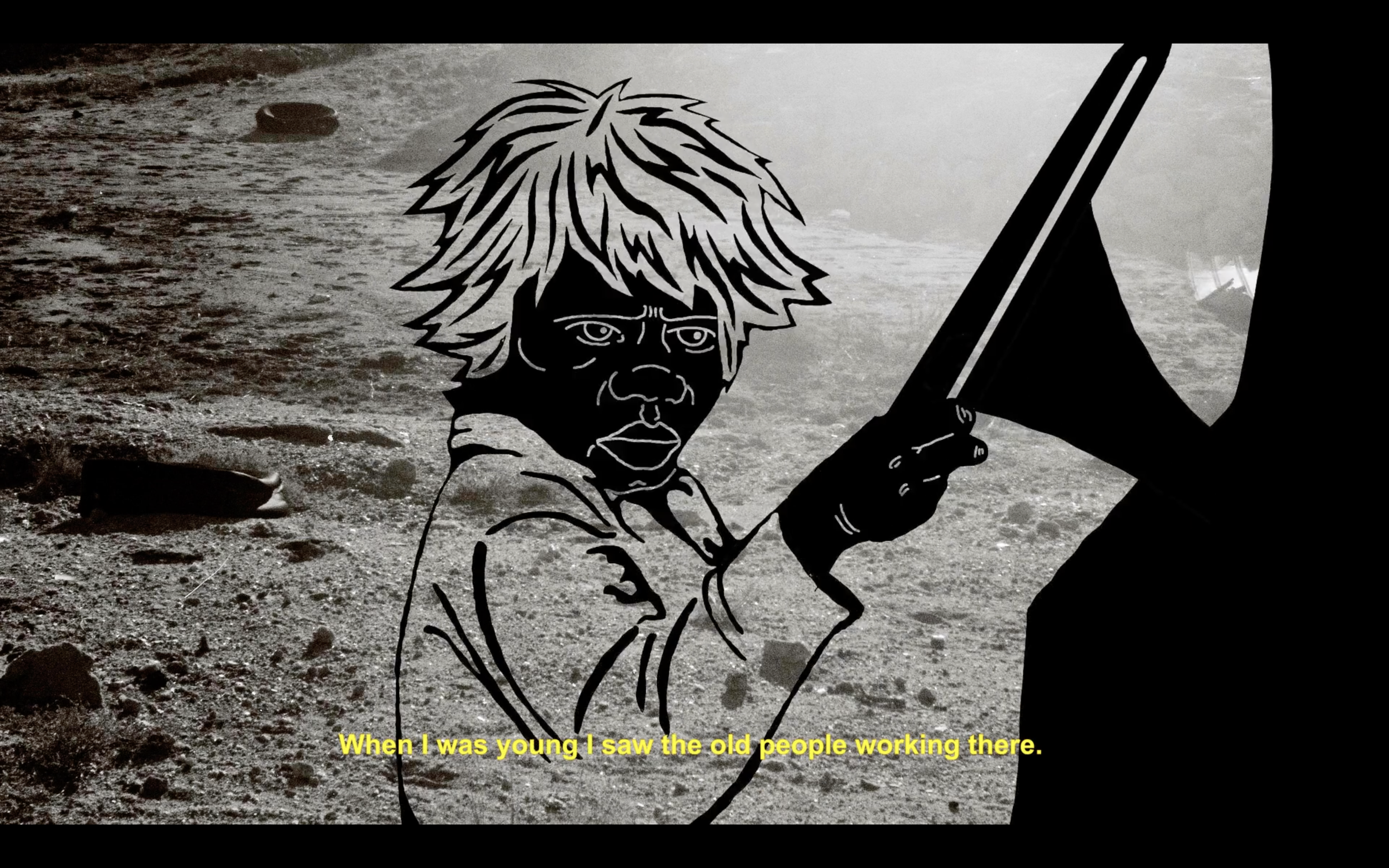
Exhibition Statement
The beginnings of this exhibition lie in several pivotal moments of the Pilbara’s history. One is the 1946 Pilbara Strike that took hundreds of Aboriginal workers off pastoral stations, to live collectively in camps that mined tin and other minerals, gathered buffel grass and collected pearl shells. They lived independently for decades, battling the state government over their right to sell minerals. A second beginning lies in the Strike Mob’s purchase of Strelley Station in 1971, and the founding of Strelley Community School and the Strelley Literature Production Centre a handful of years later. Decades before this, the Literature Centre’s principal linguist Nyangumarta elder Monty Minjun Hale gradually learnt to read English and in turn taught linguists Geoff O’Grady and Ken Hale to become literate in Nyangumarta at the Strike camp near Roebourne. Monty’s daughters Barbara and Sharon along with elder Bruce Thomas, are behind the adaptation of the Nyangumarta books for this exhibition.
This exhibition is another kind of beginning for the Strelley Mob. It is the first time that a body of art and illustrated literature made by Nyangumarta people for Nyangumarta people has been shown to a wider audience. This is not Aboriginal art or literature produced for white, settler Australian collectors, gallery goers and readers. It is instead a cosmogonic body of stories and illustrations designed to keep Nyangumarta strong through reading, writing and speaking. One such story, Waraja marrngu kanya majalu (1982) tells of a pastoralist taking one of the strikers back to the station where he once worked, while Murtilyalujirri Nyungarrangu Yarnimarnapulujaninyi Panakatapa Wirlarra Yirntirri (1990) is about two men who create the stars, Moon and Milky Way. These are stories of life in the Pilbara, of the Dreaming, and the history of the Strike Mob.
Nyaparu (William) Gardiner, now a well known Australian artist, illustrated the very first Strelley book, Japartulupa pipilu ngaju kanyanyipulu kuyikarti, a story told by Monty’s daughter Sharon Hale in 1977. This is Gardiner’s earliest surviving illustration, and this and other stories are animated in this exhibition by Vladimir Todorovic and his team, while Annie Huang has developed a projection map of the Pilbara. This has been done under the supervision of Monty’s daughters Sharon and Barbara Hale, with the support and help of fellow Nyangumarta elder Bruce Thomas, and the counsel of Ingrid Walkley and Terry Butler-Blaxell of the Nomads Charitable & Education Foundation.
The Nomads organisation supports the struggles of remote communities and schools to maintain a degree of independence from educational curriculums and other policies set by state governments. The Strelley Literature Production Centre was nested within the earliest of bilingual education programs that emerged in government and non-government Aboriginal schools during the late 1970s , 1980s and 1990s in Western Australia, the Northern Territory and South Australia. The distinct stories and lived experiences that these books embody relays the subtlety, complexities of an Indigenous mother tongue and the relationship to the country from which the language emerges. We hope that in presenting these books, as a kind of Nyangumarta archive, vast in its breadth and vision, we impart a sense of how important the survival of first languages is for the heritage of Aboriginal Australia. We also hope that this exhibition illuminates the brilliance of its storytellers and storymakers.
Today, returning to these Nyangumarta archives is an opportunity to retell the unique history of Marrngu and Martu, the Aboriginal people of the Pilbara, and to reposition them in the history, but it is also a history of resistance and resilience in the pastoral and mining industries that has for too long remained untold. These books enable us to think differently about Australian art and literature. The illustrated literature in the sense that the oral traditions of Nyangumarta speakers is literature retold and transmitted over millennia. Through this work it is now possible to situate Solomon Cocky, Nyaparu (William) Gardiner, Monty Minyjua and the other writers and illustrators of these books alongside much better known authors who have defined regional Western Australia, such as Katherine Susannah Prichard, Kim Scott and Time Winton. They enrich our understanding of what storytelling is in contemporary Australia.
Darren Jorgensen & Inge Kral
Waraja marrngu kanya majalu [One man was taken by the boss]
Storyteller: Bruce Thomas
Original illustrations: Noel McKenna
Transcription: Monty Minyjun Hale
Main Animator: Sarah Soulay
Second Animator: Samuel Beilby
Director and Producer: Vladimir Todrović








